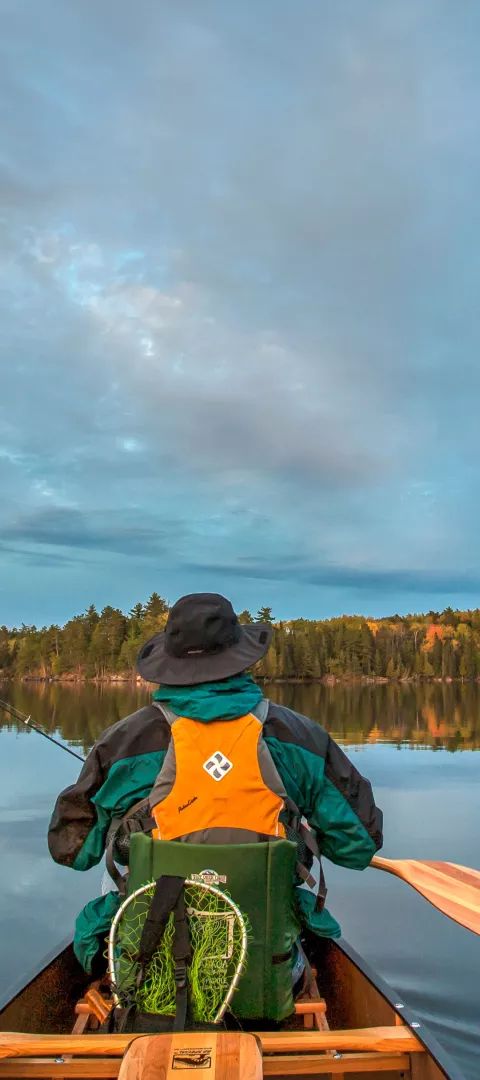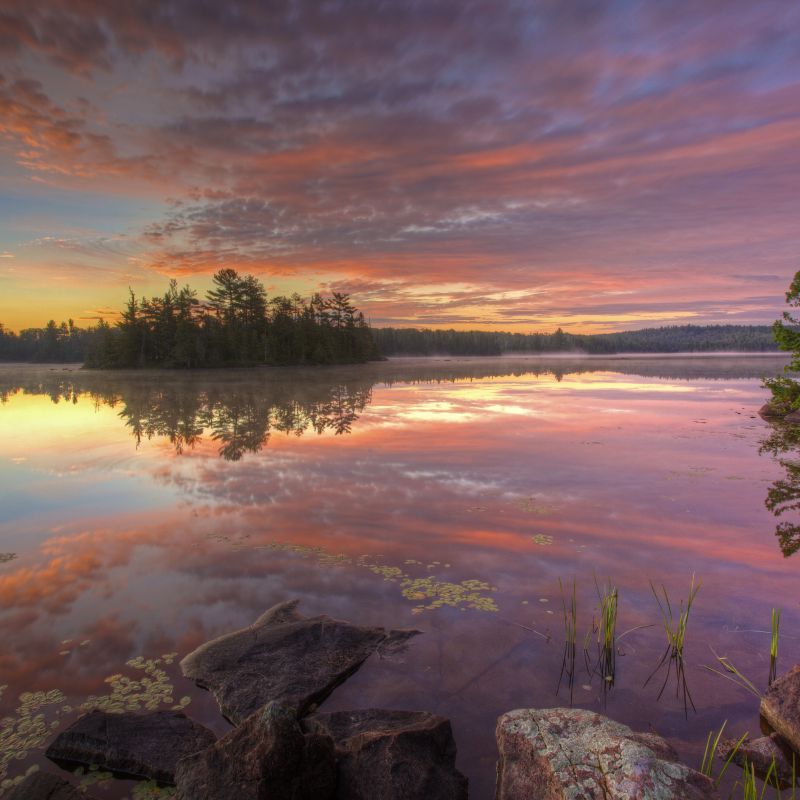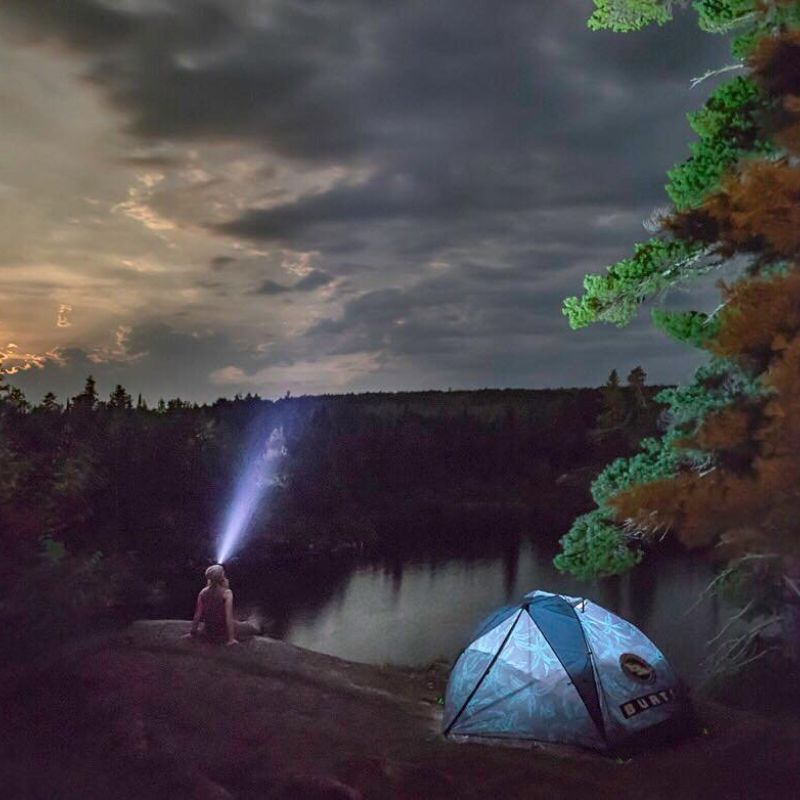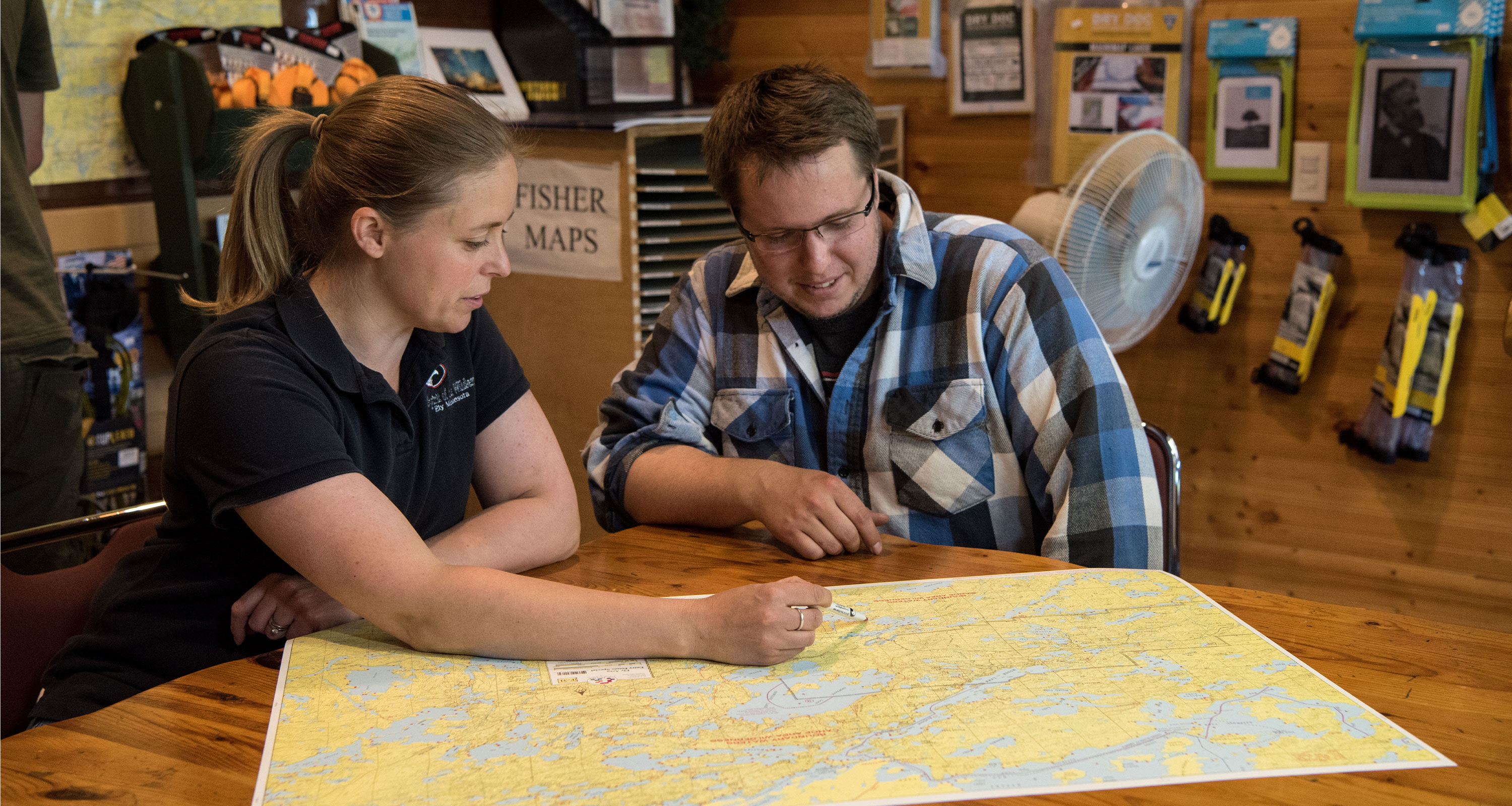
Create Your Adventure in the Boundary Waters
Create Your Adventure in the Boundary Waters
Paddling into the Boundary Waters on a canoe is a grand and classic adventure through some of the most beautiful country you'll find anywhere, and a wilderness experience unlike any other. There's just nowhere else like it in the world.
The Boundary Waters is one of National Geographic Traveler magazine's "50 Places of a Lifetime," their list of the world's "must-see" destinations, and it's not hard to see why. Situated within Superior National Forest in northeastern Minnesota, the Boundary Waters Canoe Area Wilderness is a vast preserve of lakes and woods that stretches for about 100 miles along the U.S. border with Canada. Spread within the Boundary Waters are over 1,200 miles of canoe routes over more than 1,000 lakes, rivers and streams linked by trails called "portages." And although 200,000 people visit annually, you can still travel for days and see fewer people than you would in a neighborhood restaurant.
No one lives in the Boundary Waters, and once you enter it, you won't find any roads or buildings. When you push off into these waters, you leave far behind the trappings of civilization--city lights and sounds, electricity, stores and crowds. Most of the lakes are designated as paddle only, no motors; no planes fly overhead.
It's just you and nature.

Portage your canoe between lakes in the Boundary Waters / Joe Baumann

A colorful sunrise over Grace Lake in the Boundary Waters / Gary Hamer

A nighttime campsite in the Boundary Waters / NAZpicture

Campsites in the Boundary Waters include a fire pit grill for all your camp kitchen dreams / Gary Hamer

A foggy sunrise over the glimmering, blue Boundary Waters / Gary Hamer
Create Your Own Adventure
You can create your own adventure in the Boundary Waters. Some visitors establish a base camp, and take day trips from there, limiting the amount of gear they carry over portages. Others enjoy taking a "loop" trip, moving from lake to lake. Choosing routes with longer or more challenging portages can get you into more remote areas.
Big lakes, small lakes, great fishing, access to hiking trails--you decide what you want as part of your trip. Professional canoe outfitters can help you plan a trip based on your preferences, and can provide all the gear you need.
To navigate the BWCAW, paddlers use detailed topographical maps that note the locations of campsites and portage trails, indicating the length of these paths and whether they are relatively level or hilly.
When to Visit the Boundary Waters
The canoeing season generally runs May through September. The trees leaf out as May unfolds, and there's usually great fishing in late May and early June. Wildflowers appear in June and strawberries are ready to pick. July through mid-August is the most popular time of year for canoe trips, and offers a feast of blueberries and raspberries. There are fewer bugs after late July. Daytime temperatures typically reach the 70s in the summer, 60s in May and September.
In early September, the fishing picks up again. With fewer people taking canoe trips in September, it's one of the very best months for a canoe trip. The days are typically warm, the nights cool and refreshing, and fall colors begin to appear around the middle of the month. When the weather cooperates, even early and mid-October can be a good time for the Boundary Waters. Whatever month you visit, be prepared for rain or cold, just in case.

A bald eagle in the Boundary Waters / Steve Piragis
Wildlife in the Boundary Waters
"Abundant wildlife" is by no means an exaggeration. Moose, deer, pine martens, beavers and otters are the most frequently seen animals, while black bears, porcupines, red and silver foxes, lynx, bobcat, fishers, weasels and mink are more reclusive. An exceptionally privileged visitor might be treated to an evening serenade by a pack of timber wolves -- the largest population in the lower 48 states resides in northeastern Minnesota.
More than 240 species of birds can be found in the Boundary Waters, including bald eagles, loons, osprey and a variety of owls. Pick up a bird checklist at one of the ranger stations or visitor centers, and bring binoculars and a field guide; your lifetime list will surely be enhanced by your visit.
More than 240 species of birds can be found in the Boundary Waters
Although the number of lakes in the Boundary Waters is huge, water actually covers just over 10 percent of this wilderness area. The forests include white and red pine, jack pine, black spruce, fir, tamarack, birch, aspen and cedar.
Wildflowers bloom throughout the canoeing season, including marsh marigolds, blue flag iris, lady's slipper, Indian paintbrush, pitcher plants and wild roses.

Two Boundary Waters anglers reel in and net a fish / Gary Hamer
Fabulous Fishing
Because there is so little fishing pressure on these lakes, the fishing is legendary. For some, it's the whole point of the trip. Many record fish have been caught in the Boundary Waters, and while "catch and release" is most popular, you'll never taste a better fish than one pulled from these clear, cool waters.
What are we serving? Walleye, northern pike, smallmouth bass, and in the spring, lake trout. Be sure to ask your outfitter what's biting and which lures to pack for your trip, and plan to bring at least some live bait.

There are nearly 2,200 peaceful, secluded campsites in the Boundary Waters
Your Own Wilderness Campsite
There are nearly 2,200 designated campsites scattered throughout the BWCAW, available on a first-come basis. They are individual sites, so only your group will share your pristine camp in the woods. Each campsite has space for tents, a steel fire grate and an outdoor latrine (affectionately called the "throne" by many campers) at the end of a trail from camp. Often, there's a big slab of rock at the edge of the shore, perfect for an evening of stargazing.
To preserve the wilderness character of the area, group size is limited to nine, no bottles or cans are allowed, and trash must be packed out. If low rainfall increases the risk of forest fires, campfires may be restricted (check with your outfitter or the Forest Service). Be prepared to use a camp stove.
The reward of all these practices is a camping experience unlike any other, at a peaceful, secluded site, the lake lapping gently at the shore, and a canopy of trees between you and the endless sky.

Fishing guide looks over an area map with a customer / Lucy Hawthorne
Test the Waters With a Day Trip
Intrigued by the idea of a Boundary Waters canoe trip, but not sure if you're willing or able to commit to it? Want to see if the kids are ready for the BWCAW? Staying at a resort or cabin, and eager for a taste of a true wilderness experience? Or maybe you heard about some irresistible fishing that's only accessible by canoe.
A day canoe trip could be just the thing. Contact a local outfitter and reserve a canoe, pack a picnic lunch, grab a map and compass (and some rain gear, sunscreen, dry socks and water), and venture forth. Self-issuing day permits are available at main entry points. Popular day trip destinations are islands, Indian pictographs, fishing hot spots, waterfalls, and stretches of the various hiking trails that meander through the BWCAW.

A moose stands by the road near Grand Marais / Jackie Scherer
Getting There
Part of the fun is the trip to the Boundary Waters. It's a four- to five-hour drive from the Minneapolis-St. Paul area, or two to three hours from Duluth. The scenery along the way includes the North Shore of Lake Superior or the Iron Range area. The communities that serve as the gateways to the BWCAW are interesting in themselves, so plan to explore them before or after your canoe trip.
Entries to the western side of the BWCAW are near the towns of Ely, Cook and Crane Lake. The eastern side of the BWCAW is reached by the Gunflint Trail or the Sawbill Trail, roads leading inland from the shore of Lake Superior.
When you reach the Boundary Waters, you're in a different world, so you can turn off your cell phone (they don't work in most of the BWCAW anyway), leave the CDs and tapes in the car, forget about e-mail for a few days, and enjoy your journey into the wilderness. It can be just a little unsettling at first. The hum of the city is gone, and the only sounds you'll hear are the calls of loons, the wind in the trees, water lapping against the canoe, and simply, silence.
And after a couple of days here, you're going to feel something completely different. Some call it peace. And most of us don't really have words for it. It's a feeling, not an expression. You just have to experience it and you'll know.
That's why people keep coming back. They come to the same place every year — and take a different vacation each time.

